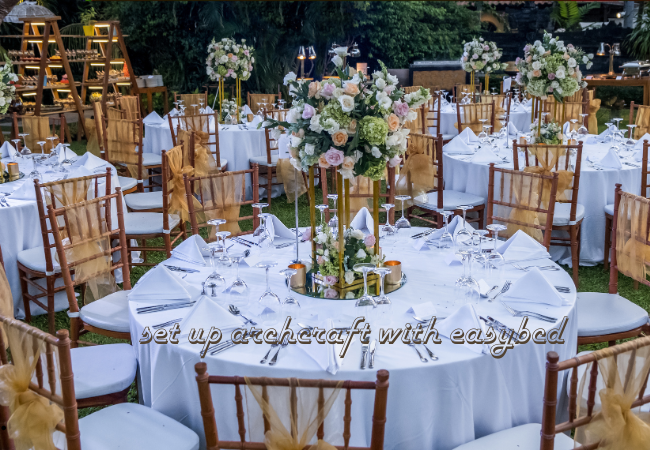Archcraft is a versatile and lightweight Linux distribution based on Arch Linux, designed for advanced users and enthusiasts. Setting up Archcraft alongside other operating systems can be achieved effectively using EasyBCD, a powerful boot management tool. This guide will walk you through the process of setting up Archcraft with EasyBCD, ensuring a smooth dual-boot experience.
Why Choose Archcraft?
Archcraft stands out as an excellent choice for users looking for a minimalistic yet customizable environment. Here are some reasons to consider Archcraft:
- Lightweight Design: Archcraft is built for speed and efficiency, making it ideal for older hardware or users who prefer a streamlined operating system.
- Customizability: With its Arch-based architecture, users can easily tailor their desktop environment and software to their preferences.
- Rolling Release Model: Archcraft follows a rolling release model, ensuring you always have the latest features and updates without needing to reinstall.
What is EasyBCD?
EasyBCD is a boot manager for Windows that allows users to manage their boot options, making it easier to dual-boot multiple operating systems. With EasyBCD, you can add, delete, or modify boot entries, simplifying the process of setting up Archcraft alongside Windows or other OS installations.
Step-by-Step Instructions to Set Up Archcraft with EasyBCD
1. Prepare Your System
Before setting up Archcraft, ensure your system is ready:
- Backup Important Data: Always back up important files before how to set up archcraft with easybcd making changes to your operating system.
- Create Archcraft Installation Media: Download the Archcraft ISO from the official website and create a bootable USB drive using tools like Rufus or balenaEtcher.
2. Install Archcraft
- Boot from Installation Media:
- Insert your USB drive and reboot your computer.
- Access the boot menu (usually by pressing F12, Esc, or another key) and select the USB drive to boot from.
- Follow Installation Steps:
- Follow the prompts to install Archcraft. Make sure to partition your hard drive correctly, allocating space for Archcraft while ensuring Windows remains intact.
- Complete the Installation:
- Once installed, reboot your system, and you should see the Archcraft login screen.
3. Configure EasyBCD
After installing Archcraft, you need to configure EasyBCD to manage your boot options:
- Open EasyBCD:
- Boot into Windows and launch the EasyBCD application. If you don’t have it installed, download it from the official NeoSmart Technologies website.
- Add a New Entry:
- In EasyBCD, click on the “Add New Entry” option from the left sidebar.
- Select the “Linux/BSD” tab.
- Choose the Type:
- From the “Type” dropdown, select “GRUB 2” (this is the bootloader used by Archcraft).
- Name your entry (e.g., “Archcraft”) and ensure the drive letter corresponds to the partition where Archcraft is installed.
- Add Entry:
- Click “Add Entry” to include Archcraft in your boot menu.
4. Configure Boot Options
- Set Default Operating System:
- You can set Archcraft as the default OS to boot into if you prefer.
- Go to the “Edit Boot Menu” how to set up archcraft with easybcd section and adjust the boot order and timeout settings.
- Save Settings:
- Once your changes are made, click “Save Settings” to ensure your configurations are applied.
5. Reboot Your System
- Restart your computer. You should now see the EasyBCD boot menu, allowing you to select either Windows or Archcraft.
Troubleshooting Common Issues
Boot Entry Not Appearing
- Refresh EasyBCD: If Archcraft doesn’t appear in the boot menu, return to EasyBCD and ensure you added it correctly. Try adding the entry again if necessary.
Booting Issues
- Check Boot Order in BIOS: Ensure your hard drive is set as the primary boot device in your BIOS settings.
GRUB Issues
- If you encounter GRUB-related errors, you may need to boot into the Archcraft live USB and reinstall GRUB.
Community Resources
For additional support and to enhance your Archcraft experience, consider engaging with online communities:
- Archcraft Official Forums: Join the community forums to share experiences and get advice from other Archcraft users.
- Arch Linux Wiki: This comprehensive resource contains valuable information on various aspects of Archcraft and Arch Linux.
- Reddit Communities: Subreddits like r/archlinux can provide tips and support from experienced users.
Conclusion
Setting up Archcraft with EasyBCD allows you to enjoy the best of both worlds—Windows and a lightweight Linux experience. By following this guide, you can easily configure your system for dual-booting, enhancing your productivity and flexibility. Don’t hesitate to explore the community resources available to further enrich your journey with Archcraft.
